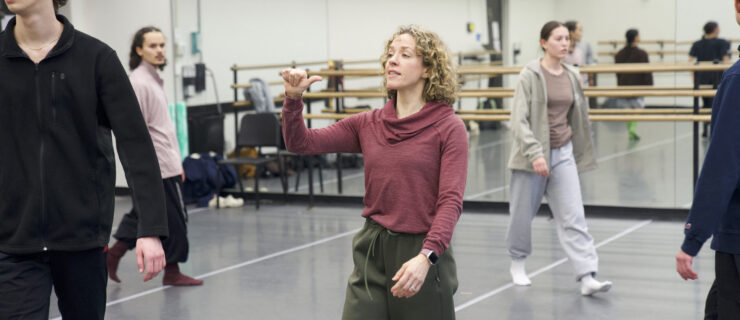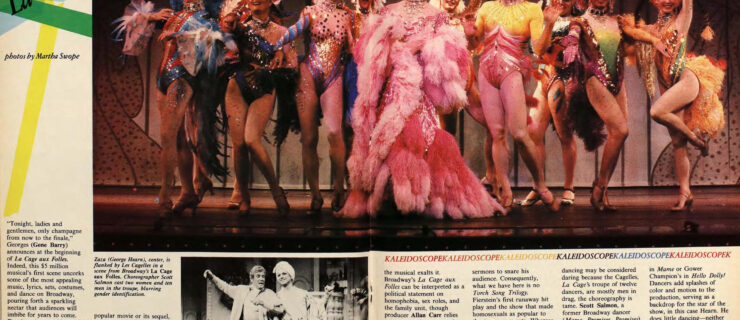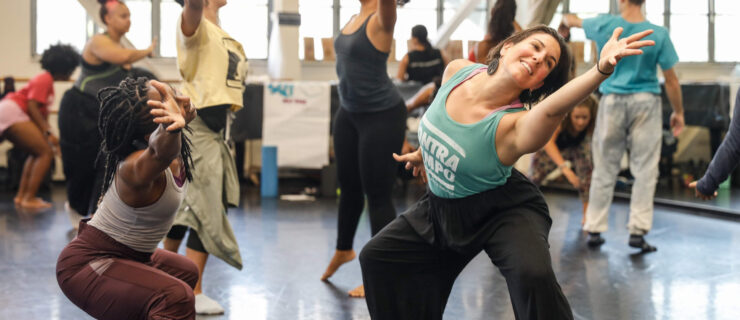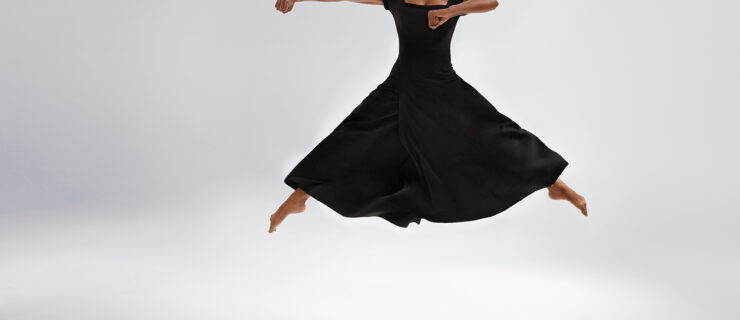Teacher's Wisdom
Derick Grant started tap training at age 2 in The Roxbury Center for the Performing Arts, the Boston studio run by his aunt. He served as dance captain in
Bring in ’da Noise, Bring in ’da Funk on Broadway, and for the first national tour he took over Savion Glover’s role. In the summer of 2006, he choreographed and directed Imagine Tap!, which had a four-week run at Chicago’s Harris Theater with a cast including several of the best tap dancers of his generation. Brian Seibert observed one of Grant’s classes at NYC’s Steps on Broadway and asked his advice for tap students today.
What do you find to be the most common difficulty that your students face?
One of my favorite sayings is, “We get in our own way.” So much of tap dance is about confidence and insecurities. We’ve already decided who’s better than us, who’s not as good. We don’t want to make mistakes in front of people. I try to create a comfortable atmosphere. One of the hardest things is getting students to try. Just go for it. Mess up. That’s what class is for, screwing it up. We’re doing a bunch of experiments, trying to get it right. You discover what feels good, what doesn’t, and out of that, you create your own way, which is the point: self-expression.
In your beginner class, you start by having everyone stand on one leg with their eyes closed. Why?
People who don’t tap always say, “What’s the trick?” I don’t think there is a trick, but if there were one, it would be balance and knowing where to distribute the weight. Ultimately the most important thing a tap dancer can have is strength in the standing leg while the other leg is doing all the fancy stuff. Then I give students exercises to go from one leg to the next. We spend more time on that than on “This is a shuffle, this is a flap.”
You talk in classes about making choices and taking responsibility for them. Why?
Students often abandon their power to make choices. They just do what they see other people doing. Be conscious of everything available to you. Don’t just ask yourself: What step should I do? Ask: What should it sound like? What should it feel like? What should it look like? For the most part, we choose what we think will get a rise out of the audience. What makes you a more accomplished, mature, developed dancer is to go beyond that. There should be more.
What is that “more?”
Being conscious of time, sound, knowing what’s coming and having a plan to get there, not just hoping things work out that way. Everything that’s coming out of your feet—be responsible for that. Even if you messed up, it’s all right. Figure out what’s wrong and make it right. If you’re not asking questions and seeking corrections, then you’re not going to grow. You’re just going to fly under the radar.
What do you mean when you tell students, “Don’t think about what step comes next, but what sound comes next?”
We have to educate ourselves as musicians—know how to count, know the relevance of “the pocket” and phrasing. At the same time, it’s about releasing that music and not always judging it. People worry about all of those things; they get stifled. Be conscious about what you’re doing but also be free. All of those pretty little pictures we want to paint, that our spirit feels, that our soul feels, whatever is on our mind, how our day is going—those things should be expressed. That’s what I mean by “the next sound.” As opposed to thinking, “I want to do a really cool step.” The heart and the brain have to be balanced.
Is that why you have your students turn their backs to you and mimic your phrases by ear—what you call no-peeky-peeky?
Yeah. It has to do with the intention behind the note. Putting it down versus slamming it down. A musician learns how to play with nuances that depend on his emotion or the groove. No-peeky-peeky gives us the skill set to accomplish that—to hear the phrase, process it in your head, and find it in your body. The thing I love best about tap dancers is when I can close my eyes and understand where they’re at. We’ve seen so much athletic tap dancing that we have certain expectations and sometimes our eyes can betray us. Because if somebody is not doing Over the Tops or crazy fast steps, we say, “Oh, they’re good, but…” But by closing your eyes and listening, you can enjoy nuances that you might not otherwise notice. And then there are some dancers who are chopping it up, and when you close your eyes, it sounds like a computer, not like the heart at all.
How can a student work on his or her individual sound in a group class?
It can be hard to hear yourself. That’s one reason I teach without music. So that people can hear themselves and be responsible for their sound. We’re all gonna hear if you’re in the pocket or not. Outside of class, I recommend recording yourself and listening. Like hearing your own voice on a tape recorder, it’s not exactly what you thought it was. I watch myself on video too.
How else do you recommend practicing? Take the exercises we do in class at your own speed. Also, I like to put on a tune I’ve heard a zillion times and pay attention to a different instrument—maybe listen to the piano all the way through—or two or three versions of the same tune. But most of all, listen to yourself and work at it. There’s a certain level of God-given talent, but all of the really, really good dancers, they’ve practiced their butt off.
How do students make that transition to professionals?
This is my biggest pet peeve. I have a lot of people in class I call “professional class-takers.” The reason is that there are not enough opportunities for these dancers to be onstage. They have gone as far as they can go in a classroom setting, and I’d like to see them challenged by what the stage can offer. A lot of times, when you see students onstage, they look like students. And then tap on the whole gets a bum rap. Jimmy Slyde once said to me, “The only way to get good at performing is by performing.” And so, as a teacher, I would like to create a platform where they could practice that.
Photo by Rosalie O’Connor, Courtesy Steps.




